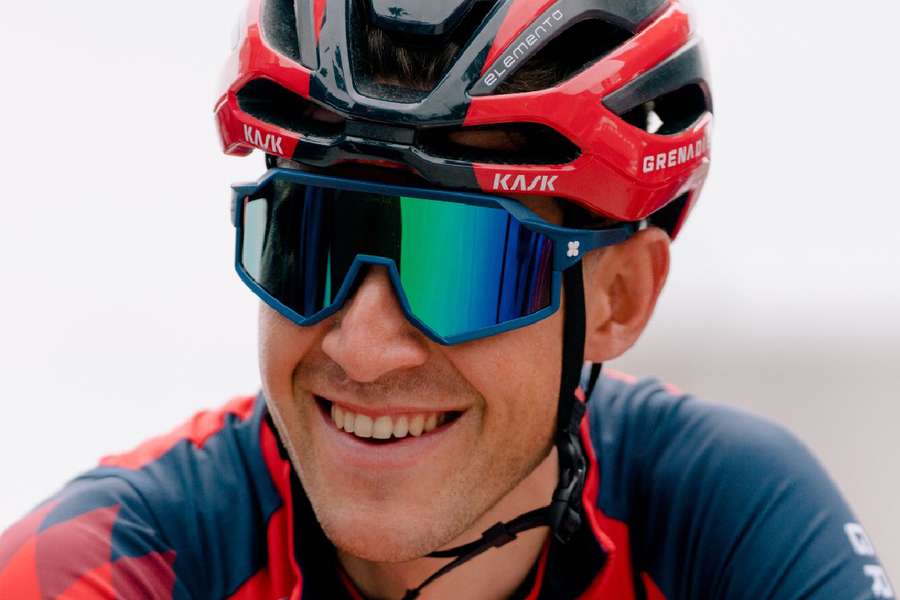INEOS Grenadiers sends an armada to the Giro d'Italia, but will it be enough to take pink?

On a purely theoretical level, INEOS-Grenadiers has five of the top 13 riders in the UCI rankings at the start of this Giro d'Italia: Filippo Ganna (26), Tao Geoghegan Hart (28), Geraint Thomas (36), Thymen Arensman (23) and Pavel Sivakov (25). They will be accompanied by Laurens De Plus (27), Salvatore Puccio (33) and Ben Swift (35).
So we have two former Grand Tour winners (Geoghegan Hart and Thomas), a home rider who is in good shape this season (Ganna), a rider who wants to take on more responsibility (Sivakov) and a young rider who is ready to make his mark (Arensman).
Will that be enough to compete with the duo of Roglic and Evenepoel? Looking at this line-up, it's clear who the designated leader is, or if there is one at all. If we are rational, Geoghegan Hart must be the one. He won this race in 2020, and is in great form at the beginning of the season having won the Tour of the Alps and finishing third at Tirreno-Adriatico. Nevertheless, it is not certain that the team will see it that way.
Ganna is on home roads and is coming off a superb classics campaign - second in Milan-San Remo and sixth th in Paris-Roubaix. He is clearly making progress to go the distance, he is the best time-trialist on the startlist, and clearly wants to move up to the next level.
But what about Thomas? You don't just dismiss a Tour de France winner. Sure, that was in 2018, but he was still on the podium at the Grande Boucle last summer. And he is clearly the most experienced and the most complete of the three. Of course, there is still the unknown of his form, but it was clearly announced that this was his goal.
As for Sivakov and Arensman, they have similar profiles, good in the mountains, resilient, but their form is uncertain. And not everyone can be protected. It is hard to imagine INEOS giving them an opportunity to go and break away, so they will probably have to work.
The Vuelta 2022 as a comparison
The recent history of INEOS does not say only good things in this field. True, it should be remembered that the British outfit won the Giro in 2020 and 2021. But the first time, Thomas was the designated leader and abandoned on the fourth stage. Geoghegan Hart was then given a free role, as Ganna did not have the stature he has today.
And in 2021, there was no debate: Egan Bernal (26) was the undisputed leader and proved it with ease. We won't mention the 2022 edition, which Richard Carapaz (29) should have won, but there again, he was the clear leader. And to see an example of failure when the leader is not obvious, you don't have to go far back, you only have to look at the last Grand Tour: the Vuelta A Espana of 2022.
At the start? Carapaz, Geoghegan Hart, Sivakov and Carlos Rodriguez (22). Who was the leader? On experience, Carapaz, without a doubt. But when you think about it, the Ecuadorian was on the way out after refusing to extend his contract, and you wonder if his team wanted to punish him by making him race a second Grand Tour in the same season.
Of course, he finished in the Top 15, won three stages and the best climber jersey. But it was only because he was no longer dangerous after having lost 15 minutes on general classification in the first week.
Made makeshift leader, Rodriguez did what he could, and rather well, staying in the race for a podium for a long time before finishing in a respectable seventh place. And if he had been propelled to the lead earlier, and with the support of a tight team, he could probably have gone for the podium. This kind of scenario is very possible in this Giro.
Reversing the trend
And this is where you wonder what the real objective of the INEOS team is. Because they don't have a rider of the calibre or quality of Roglic or Evenepoel. It is difficult to see how one of their members could hold the upper hand. So the answer has to be a collective effort. Above all it must be offensive.
Because that's the main advantage of a team like this one: the possibility to set the world on fire. Following the infernal duo and hoping for a failure is not a strategy. Unless the team admits defeat without a fight and assumes that it is running for third place. Which would raise only one question: why?
INEOS-Grenadiers, formerly Team Sky, is a grand tour team. Since its creation in 2010, it has won 11 Grand Tours and taken six more podiums. But the British team has no Tadej Pogacar (24), Roglic, Jonas Vingegaard (26) or Evenepoel. These riders are always favourites at the start. There's always Bernal, but will he ever get back to his level after a horror crash at the start of 2022?
Sometimes Grand Tours can be boring. The teams of the favourites lock the race, the explanation between the leaders has to wait for the red flame, the surprises are few. But with such an artillery, INEOS clearly has what it takes to ignite the Giro.
After the spring of classics that we have experienced, it would be disappointing to fall back on a flat Giro d'Italia, like Chris Froome's Tours de France victories in the dominant Sky era. It is up to INEOS to show that it wants to be part of modern cycling.
